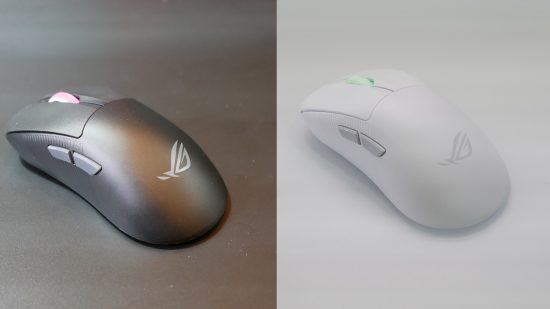Up until now, Razer was the only brand with wireless 8KHz gaming mice on the market, enabled through a special Hyperspeed dongle and software update released late last year. At CES 2024, multiple brands are now releasing high polling rate mice, but should this factor into what mouse you buy?
We reviewed the Razer Viper V3 Hyperspeed just after its 8KHz polling rate was enabled, and found it to be one of the best gaming mouse choices on the market as a result. In reality, the polling rate played a very small part in my overall enjoyment of the Viper V3, and that’s simply because polling rates are not the game-changers they’re advertised to be, yet. MSI, Cherry, and Asus ROG are now all throwing their 8KHz mice into battle, which still makes for some difficult decisions ahead.
In simple terms, a higher polling rate works similarly to a higher frame rate. Most mice operate on 1KHz, meaning they report their position back to your PC 1,000 times every second. Scaling this, 8KHz polling means you’re mouse is reporting its position 8,000 times a second, and it should lead to greater responsiveness on both movement and actions with your mouse.
The reality behind 8KHz polling is that you’re unlikely to experience any benefit unless you’re playing a game at an incredibly high frame rate, and it also draws on your CPU power to enable it.
I also found when testing the 8KHz Viper V3 and 4KHz Corsair M75 Air that the higher polling rates could cut expected battery life by up to 75% for very little return in performance.
While superfast monitors are on the rise – just look at the latest Alienware gaming monitors as an example – and there are certainly plenty of esports games that can run at a high refresh rate, the general benefits of 8KHz polling aren’t yet impactful enough to justify purchasing a mouse based on that fact alone. Instead, it could be considered diminished returns if you’re pulling CPU resources away from a game and having to charge your mouse more often just to access the faster polling rate.
High polling rates are a ‘nice to have’ feature right now, that perhaps does more to future-proof your gear than make an instant change to how you play. This doesn’t mean that the ROG Keris II Ace, MSI Versa Pro, and Cherry’s M68 and M64 Pros are dud products, far from it. But I strongly recommend relying on features outside of the polling rate to help you decide which one to buy.
For instance, the ROG Keris II Ace is incredibly light at just 54g. MSI’s Versa Pro has 13 programmable buttons and a stylish charging dock. Finally, the Cherry Pros are fairly clean-cut at 55g with no distracting lights or buttons to take away from raw performance.
If you decide which mouse would be your go-to before considering polling rates as a factor, you’re much more likely to walk away happy with your mouse which will hopefully serve you for years to come, but covered for the future if polling rates become the hot new feature.
All of the above mice are due for release in Q2 2024 and the only price revealed so far is the Cherry M64 and M68 Pros which will cost $139.
For more of the latest news, interviews, and hands-on previews from CES, stick with us as we’re live on the show floor in Las Vegas.
